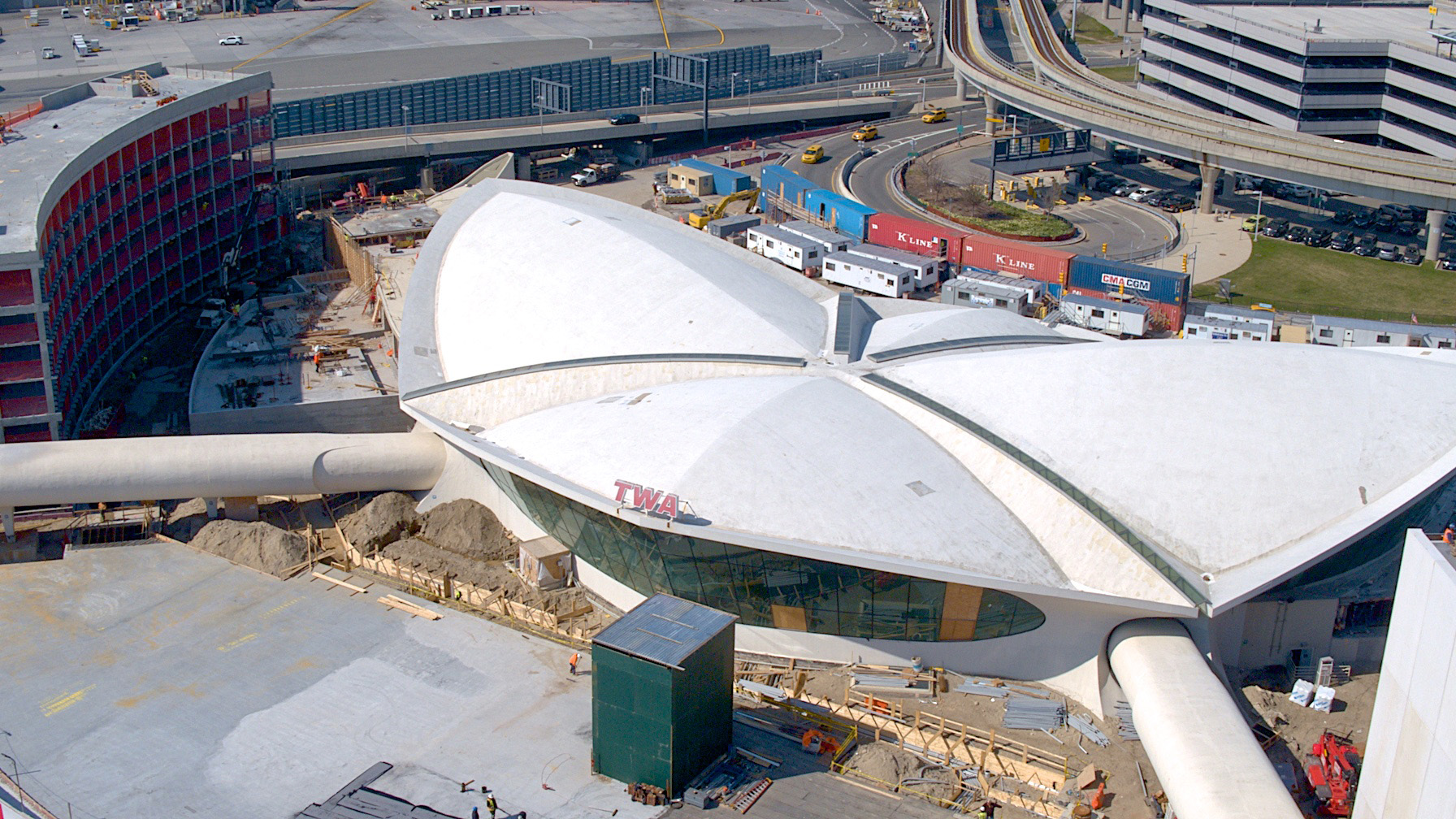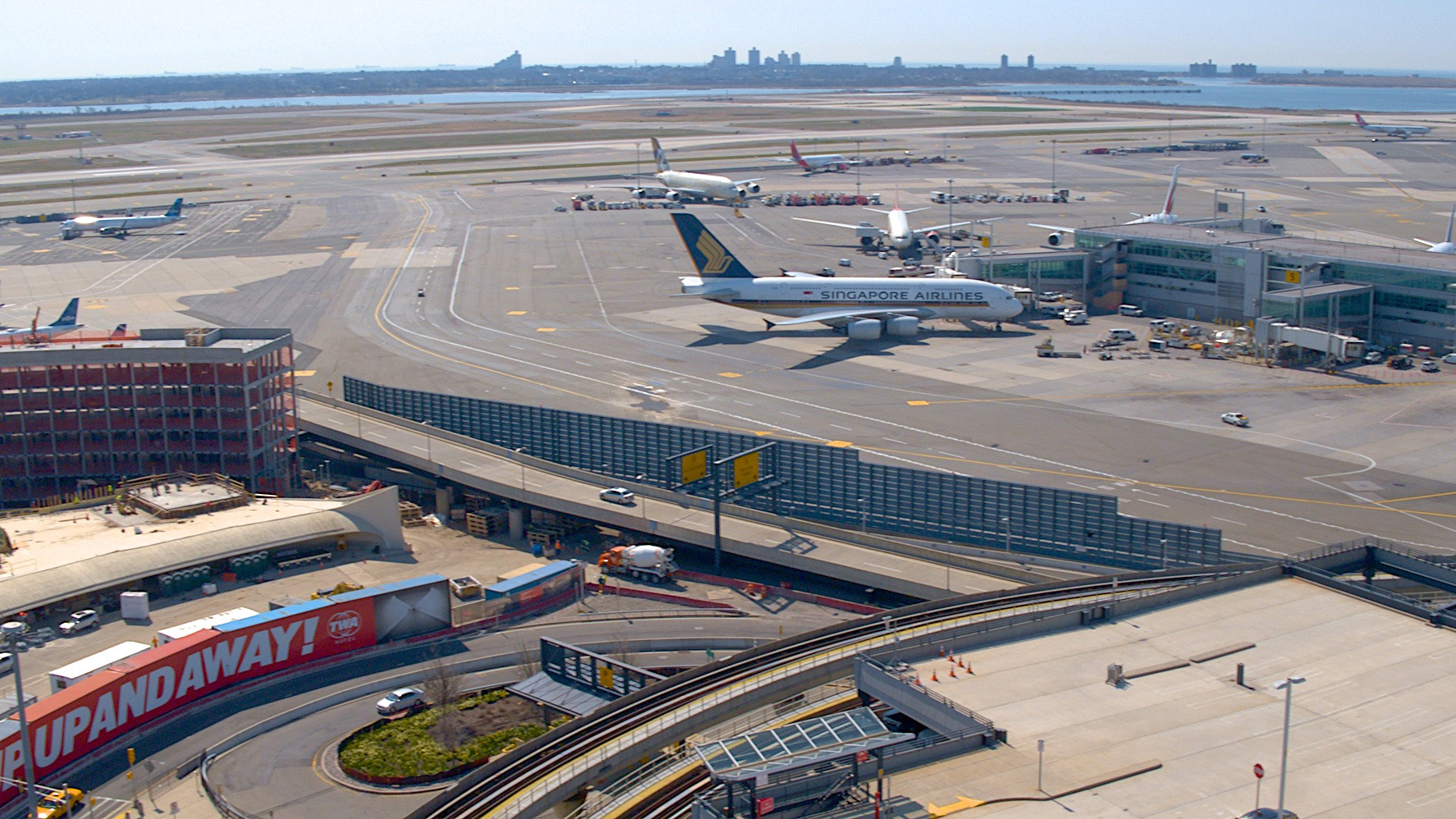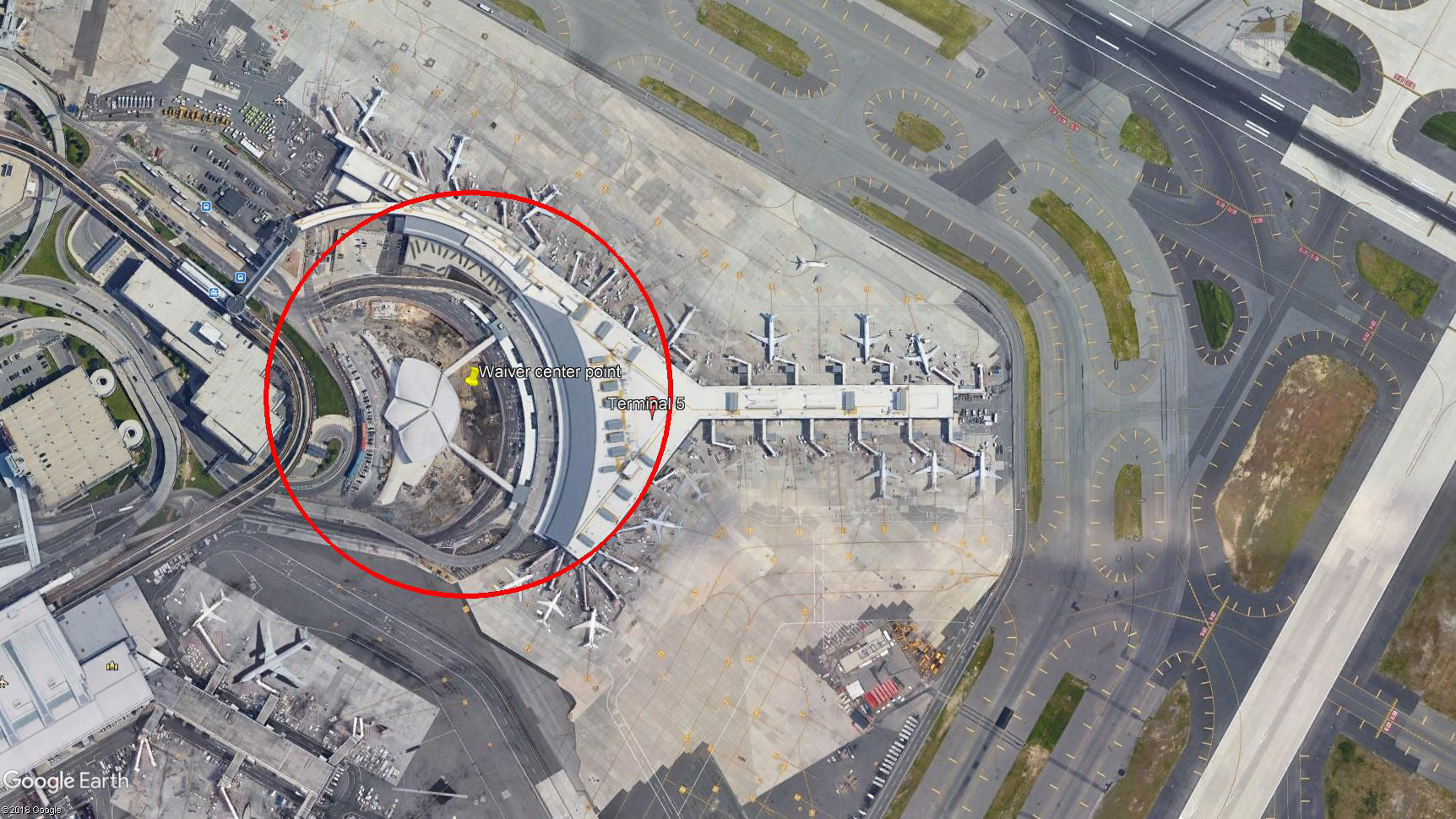Drone films at JFK
Filming at one of the nation’s busiest airports might have been comparatively easy with a manned helicopter, but the film producers needed shots not possible with a helicopter, so they turned to a drone crew.
Among the shots in the list was a view of the TWA Hotel construction site at John F. Kennedy International Airport in New York that calls for the camera to rise from ground level up to dozens of feet in the air, a shot that only a drone could capture safely from the midst of a location crowded with equipment and the emerging structure of new buildings. It also was a matter of cost and budget.
“I think we were so focused on the mission and getting the shots that we need to get for the client that once we were actually up in the air flying, it really did feel just like any other mission,” Tucci said. “Everybody really did do their part … it really was, once we were flying kind of uneventful, in a really good way.”

Hours later, with the flights complete and the footage transferring to his computer, Tucci finally had a chance to reflect. “I kind of really realized and thought, this was so awesome.”
Tucci is also a student pilot who took his first flight lesson at age 12, and has logged time in helicopters and fixed-wing aircraft, ranging from a Cessna 172 to a friend’s Cessna 421. He met Windmiller at an airport, and the two created the company, combining Windmiller’s experience as a test pilot for Continental Motors and Extra Aircraft, among others, with Tucci’s extensive experience in film and video production. His résumé includes aerial cinematography with manned helicopters as well as unmanned aircraft. Tucci said he and Windmilller brought their experience to bear on designing a safe mission, and securing the required approvals.
That process included a visit to the FAA website used by all Part 107 remote pilots seeking permission to fly in controlled airspace, and submission of a request to fly the unmanned aircraft within a roughly 600-foot radius over the site where the TWA Hotel is being built next to the historic TWA terminal building. (Cinematic Aerospace’s client is a documentary film crew telling the story of that hotel’s construction, and the team plans to return in 2019 after the hotel is finished.)
Tucci said conversations with airport staff preceded the waiver application. After a January meeting about the potential for using a drone as part of the filmmaking process confirmed that the airport was willing to consider it, the waiver application was filed online, stipulating a one-tenth-nautical-mile radius around the center of the construction site. An FAA spokesman declined to comment, but provided a copy of the waiver that was granted in February. Among the stipulations that the drone crew agreed to was to notify the air traffic control tower in advance, and to have a representative of the tower staff on location with the drone pilot and visual observer during the flights to facilitate communication in case of emergency.

Tucci said weather was another factor, and the team had to push the date a few times.
Tucci said the process of securing the authorization from DJI to fly the Inspire 2 in the heart of the airport had gone smoothly. Tucci supplied the required documents to DJI well in advance to have the John F. Kennedy International Airport no-fly zone unlocked.
Finally, on April 11, the weather held and the mission began. With visual observer Kyle Hurley (who also flies drones for Cinematic Aerospace) by his side, along with representatives of the airport tower, airport management, airport police, and the documentary film’s director, Tucci powered up the Inspire 2 for the first of a series of relatively simple flights. Tucci said the film crew asked for shots that did not require complex camera movements, so he operated the camera himself, with Hurley helping him keep the Inspire 2 well within sight. Rigorous attention to that particular detail also meant launching multiple flights from different locations around the construction site to ensure there would be no risk of either pilot or observer losing sight of the drone.
As drone pilots around the country conduct more and more advanced missions, and the FAA considers further steps toward integration of manned and unmanned aircraft in the National Airspace System, this mission may become just a footnote in history. Flights like these may one day be routine, but Tucci said conducting the first drone flights at this particular Class B airport was a privilege that he appreciated.
“I have just always loved aviation,” Tucci said, noting that outside of helicopter passengers and crew, “most people don’t get to see the airport from the air like that.”





